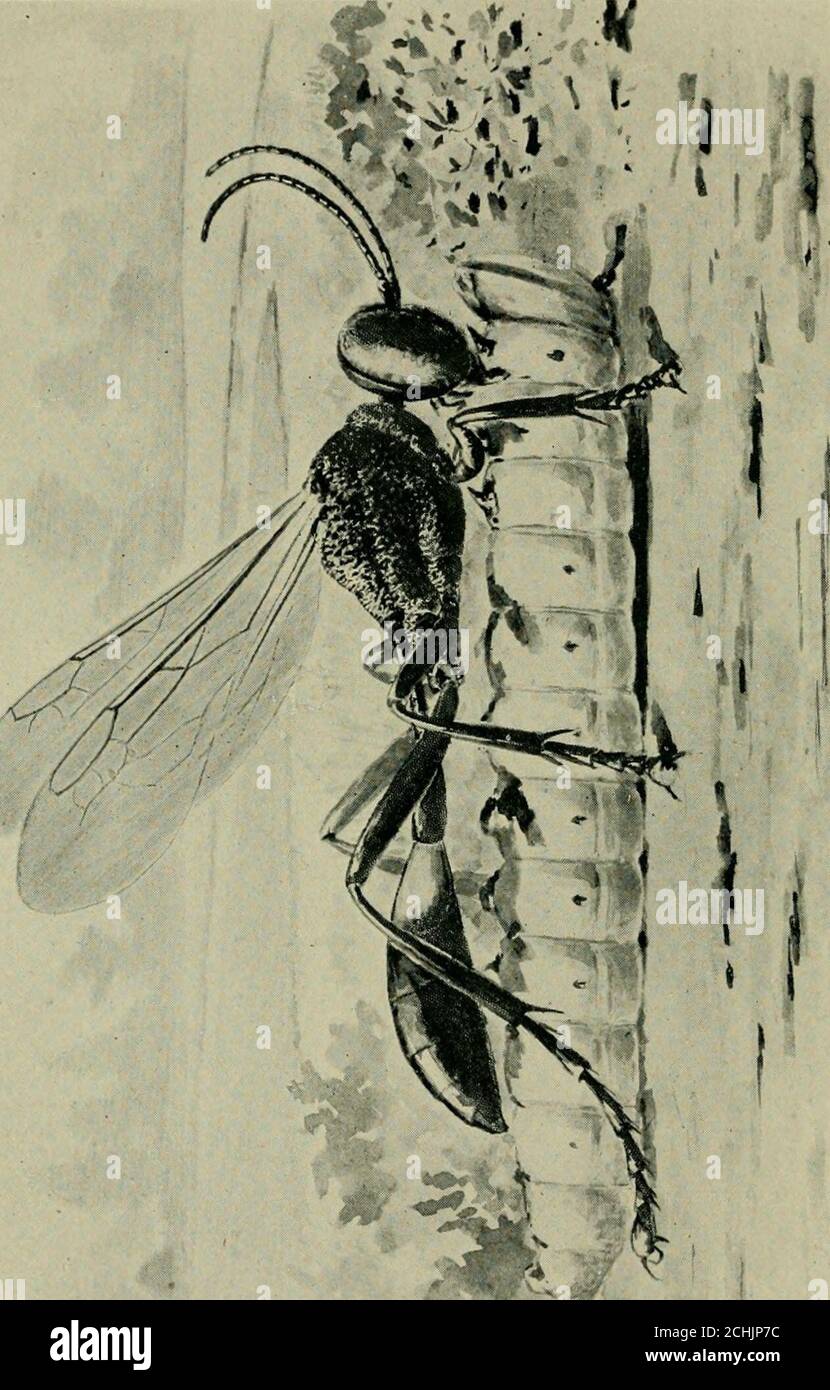. On the instincts and habits of the solitary wasps . their lives. In our neighborhood we have but two species ofAmmophila, urnaria Cresson (PL II., fig. 2), and gracilis Cres-son, both of them being very slender bodied wasps of about aninch in length, gracilis all black, and irrnaria with a red bandaround the front end of the abdomen. With two exceptionsour observations relate to urnaria. During the earlier part of the summer we had often seenthese wasps feeding upon the nectar of flowers, especially uponthat of the sorrel of which they are particularly fond, but atthat time we gave them but

Image details
Contributor:
Reading Room 2020 / Alamy Stock PhotoImage ID:
2CHJP7CFile size:
7.2 MB (417.4 KB Compressed download)Releases:
Model - no | Property - noDo I need a release?Dimensions:
1264 x 1978 px | 21.4 x 33.5 cm | 8.4 x 13.2 inches | 150dpiMore information:
This image is a public domain image, which means either that copyright has expired in the image or the copyright holder has waived their copyright. Alamy charges you a fee for access to the high resolution copy of the image.
This image could have imperfections as it’s either historical or reportage.
. On the instincts and habits of the solitary wasps . their lives. In our neighborhood we have but two species ofAmmophila, urnaria Cresson (PL II., fig. 2), and gracilis Cres-son, both of them being very slender bodied wasps of about aninch in length, gracilis all black, and irrnaria with a red bandaround the front end of the abdomen. With two exceptionsour observations relate to urnaria. During the earlier part of the summer we had often seenthese wasps feeding upon the nectar of flowers, especially uponthat of the sorrel of which they are particularly fond, but atthat time we gave them but passing notice. One bright morn-ing in the middle of July, however, we came upon one that wasso evidently hunting, and hunting in earnest, that we gave upeverything else to follow her. The ground was covered, moreor less thickly, with patches of purslane, and it was under theseweeds that our Ammophila was eagerly searching for her prey.After thoroughly investigating one plant she would pass toanother, running three or four steps and then bounding ai. 4f , Z AMMOPHILA AND HER CATERPILLARS. 7 though she were made of thistledown and were too light to re-main upon the ground. We followed her easily, and as she wasin full view nearly all of the time we had ©very hope of wit-nessing the capture, but in this we were destined to disappoint-ment. We had been in attendance on her for about a quarterof an hour when, after disappearing for a few moments underthe thick purslane leaves, she came out with a green caterpillar.We had missed the wonderful sight of the paralyzer at work, but we had no time to bemoan our loss for she was making offat so rapid a pace that we were well occupied in keeping up withher. She hurried along with the same motion as before, unem-barrassed by the weight o^ her victim. (Plate III.) Twice shedropped it and circled over it a moment before taking it again.For sixty feet she kept to open ground, passing between two rowsof bushes, but at the end of this division of